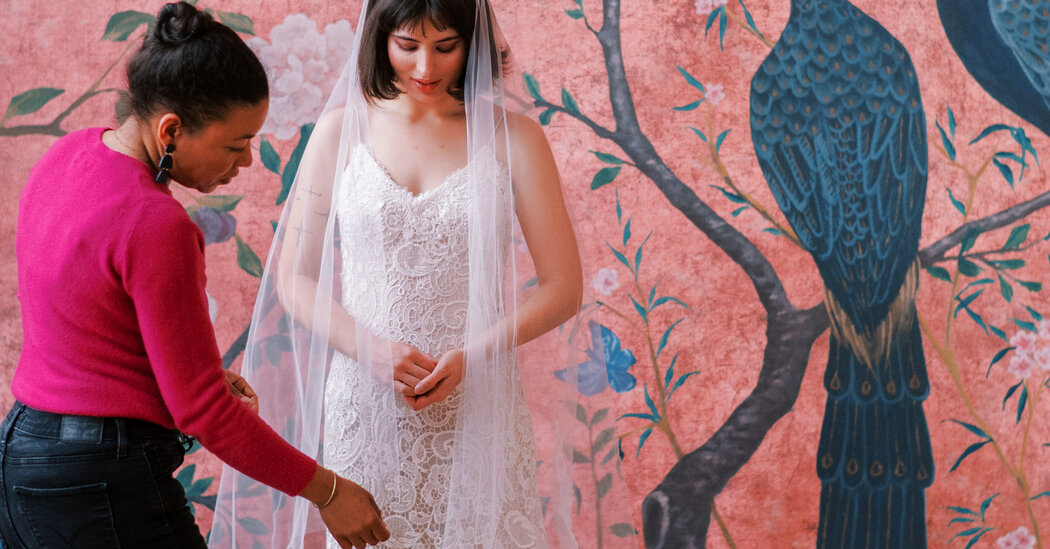
Two years ago, Ms. Lee started Madison Conner Designs, a bridal alterations business. At first, she said, her young age drew skepticism from brides’ mothers and grandmothers. “The first question I would get was, ‘How long have you been doing this?’” she said. “I could tell I was being vetted by them because of my age.”
Since then, Ms. Lee has seen steady business, as the people in her small town are now more familiar with her work. With the recent increase in brides, Ms. Lee believes there are plenty more opportunities on the horizon for her store. “There are three or four other seamstresses left in my area, but they are all older — they will all probably retire within five to 10 years,” she said. “I’m already booked out for months, and that’s after raising my prices.” Her challenge now is not finding clients, she said, but rather finding people to hire and train to help meet the demand.
The Next-Gen Seamstress
Wedding dress shopping is a momentous, emotional moment for many families, often with high expectations. Buying a dress requires significant time and money, as the average cost of a wedding gown is nearly $2,000, according to the Knot. And brides want to rest assured that the person who completes their alterations is competent and experienced. In the hands of an unskilled tailor, a beloved dress can fail to match the bride’s vision, or be ruined altogether.
“Becoming a seamstress means building a large catalog of talents, especially for bridal work,” said Kpoene’ Kofi-Bruce, 42, the creative director of Ette the Wedding Tailor in Chicago. “This is nothing like simple crafting. This is a difficult art, and it takes a long time to learn.”
Many seamstresses learn their skills by completing apprenticeships with other tailors or watching videos online. But the mystique and challenges of bridal alterations, and the fact that it is a solitary endeavor, are also part of why many professionals crave connections with peers, so they can exchange ideas and share advice.






